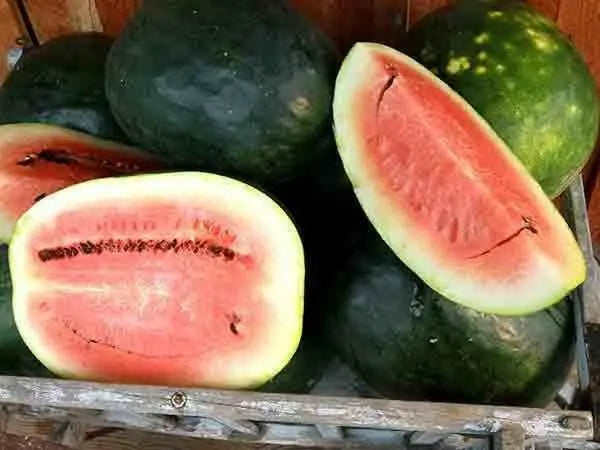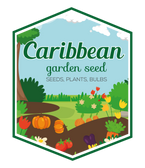
Watermelon Seeds- Black Diamond Heirloom Non Gmo
FAST & FREE SHIPPING
Over 90% of our orders are processed and ship out by next business day.
We are currently processing and shipping most orders within 1-3 business days. (backorders not included) Due to high demand during the peak months of January to May, orders may require additional time for packaging /shipment.
Free shipping for orders over $54.95. Excludes live plants, fresh products And Stackable Black Plastic Nursery Crate
Shipping and handling charges will cover outbound freight and packaging materials. Fees are applicable to all orders, based on total order value pre-tax. Expedited services can be selected at Checkout with extra fees.
- Free shipping to lower 48 states on orders $54.95+
- (Most Items), excluding live plants, plant bulbs, and black plastic nursery crate.
- Safe Seed Pledge
- Satisfaction Guaranteed
- Select your desired size and/or color from the available options.
Due to increased packing volume, expect a delay in order shipment.
The Black Diamond Watermelon is an heirloom variety known for its distinctive oblong shape and dark green rind. The flesh inside is a vibrant red color and is known for its crisp texture and delicious flavor. This variety was extremely popular in home gardens during the 1950s and is still a favorite among many gardeners today. The large fruits of the Black Diamond contain gray-black seeds and are a great addition to any garden.
- Light: Full sun
- Fruit size: 30 to 50 pounds
- Matures: 75 to 90 days
- Plant spacing: 36 to 60 inches apart
- Plant size: Long vine
- Indoor Starting
Once seeds start to germinate, lower soil temp slightly to the mid 70s, for 1-2 weeks, also decreasing water. Thin to one plant per cell or pot. Once the first set of true leaves has developed, reduce waterings once more, but do not allow plant to become desiccated.
Harden plant by gradually exposing to outdoor conditions. Transplant to permanent site in late spring after the last frost has passed. If possible, transplant on an overcast day to minimize wilting and create a more amenable environment for your young plant.
Outdoor Starting
If you have long, hot growing seasons, melons can direct-seed into garden. To ensure ripening in areas with shorter growing seasons and cooler weather, choose fast-maturing varieties, start plants inside, use black or IRT plastic mulch to warm soil and use fabric row covers to protect plants.
Direct-seed 1 to 2 weeks after average last frost when soil is 70 F or warmer. Plant 1 inch deep, 6 seeds per hill, hills 4 to 6 feet apart; or 1 foot apart in rows 5 feet apart. Can plant at closer spacings if trellised. Thin to 2 to 3 plants per hill.
Choosing a Site
Prefers warm, well-drained, soil, high in organic matter with pH 6.5 to 7.5. Consistent, plentiful moisture needed until fruit is about the size of a tennis ball. Soil temperatures below 50 F slow growth. Consider using black plastic and fabric row covers to speed soil warming. Sandy or light-textured soils that warm quickly in spring are best.
In many areas, successful crops require starting plants indoors, using plastic mulch to warm soil, and fabric row covers to protect young transplants.
MAINTAINING
For transplanting, sow seeds indoors ¼ inch deep in peat pots (2-inch square or bigger), 2 to 4 weeks before setting out. Plants should have one or two true leaves when transplanted.
Transplant at same spacings as direct-seeded crops - 2 to 3 plants per hill in hills spaced 4 to 6 feet apart, or 1 to 2 feet apart in rows 5 feet apart. Transplants are delicate and roots are sensitive to disturbance. If you need to thin, use scissors. Keep soil intact around plant when transplanting.
Mulch plants after soil has warmed to help maintain consistent moisture and suppress weeds.
If using fabric row covers, remove at flowering to allow pollination by bees. Good pollination is critical to fruit set.
Plants require consistent moisture until pollination. Once fruits are about the size of a tennis ball, only water if soil is dry and leaves show signs of wilting.
To prevent insect damage to developing fruits, place melons on pots or pieces of wood.
If growing melons on a trellis, support fruit with slings made from netting, fabric, or pantyhose. Trellising improves air circulation around plants and can help reduce foliar disease problems. Choose small-fruited varieties and reduce plant spacing.
For large plantings, leave a strip of rye cover crop every second or third row perpendicular to prevailing winds to protect plants from damaging wind.
To reduce insect and disease problems, avoid planting cucumber family crops (melons, squash, pumpkins) in the same spot two years in a row.
Do not let your melon plants get dried out during the growing season. They are not tolerant of drought. Additionally, be cautious not to over-water plants as this can negatively impact the taste and flavor later on. Keep soil moist but not soggy.
HOW TO GROW GUIDE
LET OUR CUSTOMER SPEAK FOR US

![[Seeds] - Caribbeangardenseed](http://caribbeangardenseed.com/cdn/shop/files/gift-card-gift-card-1_1024x1024_dfa857db-9150-4315-a362-7f0bb3fb9c47_60x28.png?v=1722895789)







